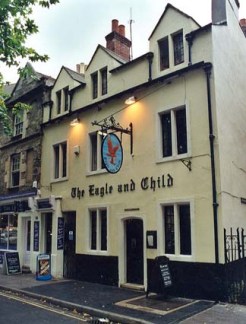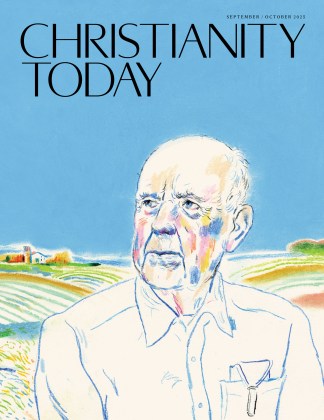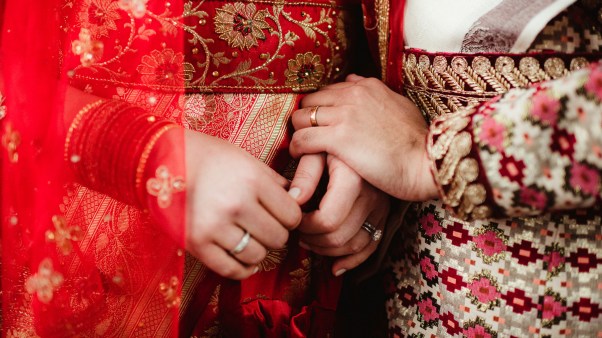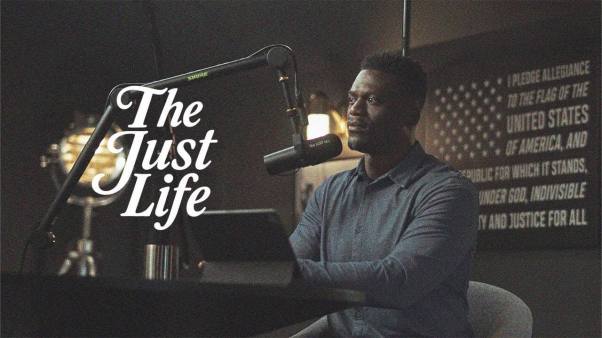 This coming week promises to be one of the most historic—and controversial—in the life of the Church of England, as its governing body, General Synod, heads toward a resolution of a long debate over blessings of same-sex couples.
This coming week promises to be one of the most historic—and controversial—in the life of the Church of England, as its governing body, General Synod, heads toward a resolution of a long debate over blessings of same-sex couples.After years of wrangling over how the church should deal with homosexuality, its bishops announced in mid-January that they would not agree to same-sex marriage but were prepared to bless civil unions. They followed with an apology for the way that LGBTQI+ people were treated by the Church of England.
Beginning Monday, the three voting houses of bishops, clergy, and laity will discuss and vote on the proposals in an all-church body known as Synod.
The deepest split on the issue has been between evangelicals vehemently against moving away from what they call the biblical concept of marriage as being between a man and a woman and those campaigning for full equality, who are frustrated by the bishops’ willingness to recognize their mistreatment of LGBT members while being unwilling to offer them marriage.
Also frustrated are members of the House of Commons advocating for the established church to endorse marriage for same-sex couples, which has been legal in England and Scotland since 2014. (Northern Ireland followed in 2020.) Last week 14 MPs met with Archbishop of Canterbury Justin Welby to express dismay at what they see as the church’s lack of equality.
The debate has grown so tense as Monday’s meetings begin that facilitators have been hired to help navigate the discussions.
The current proposal for blessing new civil unions and praying for those already in them comes after a six-year discussion project within the church, called Living in Love and Faith. The Archbishop of York, Stephen Cottrell—the English church’s second-highest ranking prelate—said that the bishops had opted for a pastoral rather than a legislative way forward: changing the church’s canon law on marriage would take years, he pointed out.
“I hope that these prayers of love and faith can provide a way for us all to celebrate and affirm same-sex relationships,” he said.
Welby, the primate of the Church of England and the ceremonial head of the worldwide Anglican Communion, acknowledged that the proposals were a compromise. “I am under no illusions that what we are proposing today will appear to go too far for some and not nearly far enough for others,” he said in a January 18 statement.
The bishops also urged congregations to welcome same-sex couples unreservedly in their churches, advising that inclusion is founded “in Scripture, in reason, in tradition, in theology and the Christian faith as the Church of England has received it.”
Though the bishops’ middle course of blessing unions avoids the legislative wrangling of changing church doctrine, they are keen to win Synod support for the proposals, which can be bestowed with a simple vote. Heading into the week, the count looks tight. According to the Rev. Neil Patterson, chair of the General Synod gender and sexuality group, reformers will begin the week with 167 yes votes out of a total of 467, based on subscribers to the group’s pro-reform email list.
The challenge will be convincing enough pro-LGBTQ members that the proposal goes far enough.
“We would have liked rather more than the limited way that the prayers have been framed,” said Patterson. “But this is a step forward worth supporting. My philosophy is that we have to have a gradualist approach if we are to eventually accept same-sex marriage. If we have celebratory services at this stage we can get there.”
Evangelicals, for this reason, refuse to go even as far as blessings. The Church of England Evangelical Council has warned that the proposals will lead to what it calls “broken fellowship” and “a greater tearing of the fabric of the worldwide Anglican Communion” while also “compromising with prevailing culture.”
Earlier this week the CEEC’s director of strategy and operations, Canon John Dunnett, called the proposals a “lose-lose situation,” explaining, “The liberals don’t get what they want, and we have been dragged into a place that we can’t accept.”
General Synod member Jayne Ozanne, a long-standing campaigner for marriage for all, said she could not accept the bishops’ plans as a halfway house and will offer an amendment calling for debate of same-sex unions in the near future, but others who support equality are willing to accept the blessings for now. Dr. Charlie Bell, a psychiatrist, Anglican priest and author of the recently published book Queer Holiness, urged members of Synod to accept the bishops’ proposals.
“For me this is a clear stepping stone to equal marriage. Is it enough? Absolutely not,” Bell told Religion News Service.
Beyond the Church of England’s decision looms a broader fight with other churches in the Anglican Communion. Bell wants the church hierarchy, especially Welby, to be more courageous in taking on conservative Anglicans who are not only opposed to same-sex marriage but condemn people for being gay.
The 14 MPs who met with Welby for private talks indicated that the issue raised the question of whether a church that rejected the legal status of married people in England could continue to be the established faith. Welby recently said he would rather accept disestablishment than to split the church itself.
Ian Paul, a theologian and vicar who is opposed to marriage reform, said, “The idea that the government should tell a Christian church what its doctrine should be is unprecedented.
“The Church of England is the established church but it has been self-governing since 1919. An intervention like this would be implausible, provoking a constitutional crisis,” he said.
Well, I promised to report back on the Kalamazoo Congress on Medieval Studies, and so I will, at least for a moment before turning to another set of lenses on a “usable medieval past.”
In a word, the congress was overwhelming. With over 3,000 scholars and over 600 sessions (averaging 3+ papers each) stuffed into a few days, many of them on topics very esoteric and technical, my head was swimming. Navigating the sessions became an exercise in close reading and careful exegesis of the program-book. Fortunately, more often than not I did manage to hit pay-dirt.
I attended sessions on everything from pleasure in medieval scholarship (turned out to be heavily laden with queer theory–didn’t know that from reading the program book) to the Cistercians Aelred of Rievaulx and Bernard of Clairvaux.
As a historian whose interest in history is firmly anchored to the church, I found the best sessions were the ones in which the seats were filled with monks and nuns – e.g. the Cistercian track. One exception was a wonderful session on “Teaching hagiography as narrative theology,” presented by a panel consisting of a professor who had taught a course on just that subject, along with an animated group of bright graduate students who had taken her course and done various fascinating papers for it.
Because I am still processing, I’ll leave the rest of my observations aside for now and turn back to another entrée to this subject of medieval studies that has been very fruitful for me: the work of a select group of British Christian authors – medievalists all.
The circle of C. S. Lewis’s friends loosely referred to as “the Inklings” – though not all attended meetings of that circle in Lewis’s rooms – included a number of top-notch scholarly medievalists. These included Lewis himself, J. R. R. Tolkien, Dorothy L. Sayers, and Charles Williams.
Historian Norman Cantor has written a fascinating book called Inventing the Middle Ages. Essentially this is a survey of how modern thinkers and writers have created “medievalisms” – the term means “modern uses or construals of the Middle Ages” – that have impacted how we view the Middle Ages today. One chapter of this book deals with the authors just mentioned. He calls them “the Oxford fantasists.”
Cantor reminds us that Lewis “had established his reputation as a leading medieval literary historian with The Allegory of Love (1936), a pioneering and influential study of medieval romantic literature.” Tolkien did important work on Beowulf and was “the leading scholar on the subjects of two precious fourteenth-century poems written anonymously in the Midlands, about seventy miles from Oxford, in the dialect of that region . . . Sir Gawain and the Green Knight and Pearl.”
Cantor makes a startling claim. Surveying the entire scholarly field of medieval studies, he concludes: “Of all the medievalists of the twentieth century, Lewis and Tolkien have gained incomparably the greatest audience, although 99.9 percent of their readers have never looked at their scholarly work.”
What does that mean for our attempts to “excavate” a usable medieval past today? Only this:
“In terms of shaping of the Middle Ages in the popular culture of the twentieth century, Tolkien and Lewis have had an incalculable effect, and the story is far from ended. Their fictional fantasies cannot be separated from their scholarly writing. Their work in each case should be seen as a whole and as communicating an image of the Middle Ages that has entered profoundly and indelibly into world culture.”
In other words, in their fantasy writing, Tolkien, Lewis, and their circle “wanted to impart a sense of medieval myth to the widest audience possible. They wanted to represent to the public the impress of the kind of traditional ethic they derived from their devotion to conservative Christianity.”
I think this insight of Cantor’s gets right to the heart of Tolkien’s and Lewis’s (and Sayers’s and Williams’s) fiction. They saw the medieval era and the Christian values it embodied as a vibrant corrective to many of the ills of their own age. And they saw imaginative literature (in Tolkien’s and Lewis’s case, a genre they called “fairy stories”) as the best way to communicate these values to our time.
But none of these authors stopped with fairy stories. Lewis, for example, summarized many years worth of his own lectures to undergraduates on the subject of medieval faith and culture in the fascinating Discarded Image. In this book he shows with great vividness that, for the medievals, the objective universe was alive with truth and meaning.
Sadly, for us (whether we consider ourselves “moderns” or “postmoderns” doesn’t matter), not only has truth been emptied from the universe, we ourselves have been emptied. In the face of this disaster, Lewis did not stand by. He addressed it both in philosophical essays such as those contained in The Abolition of Man and in his fiction.
Tolkien did the same, though in a subtler and perhaps more literarily successful way, in his Hobbit, Lord of the Rings, and other stories.
Sayers wrote quasi-medieval mystery plays such as The Zeal of Thy House and The Just Vengeance and translated Dante.
Williams forged his own deep study of Dante into a full-blown “romantic theology” for today (in books such as The Figure of Beatrice), and he also injected strange and supernatural medieval elements into such modern-themed novels as The Place of the Lion, Descent into Hell, and The Greater Trumps.
Lewis, Tolkien, Sayers, and Williams found fame through their own works of imaginative literature. That literature itself has become a portal into a medieval world that, for all its faults, was shot through with biblical insights into the meaning of being human in a world created by God.
This is why these accomplished medievalists make such wonderful “guides” for Christians today who want to explore the medieval world and medieval faith. We know them well. We trust them because they have spoken truth to us in their stories and essays. And in those writings, they have already initiated us into the medieval world.
So why not follow them down that road, with The Lord of the Rings or The Space Trilogy in one hand, and The Divine Comedy or Beowulf in the other? We’ve enjoyed their writings. Now let’s explore their conviction that the medieval world still has some important things to teach us today – as 21st-century folks and as Christians.
Image: Facade of the Eagle and Child pub in Oxford (England), where the Inklings met (1930-1950). 2002 photograph by Stefan Servos via Wikimedia Commons.








